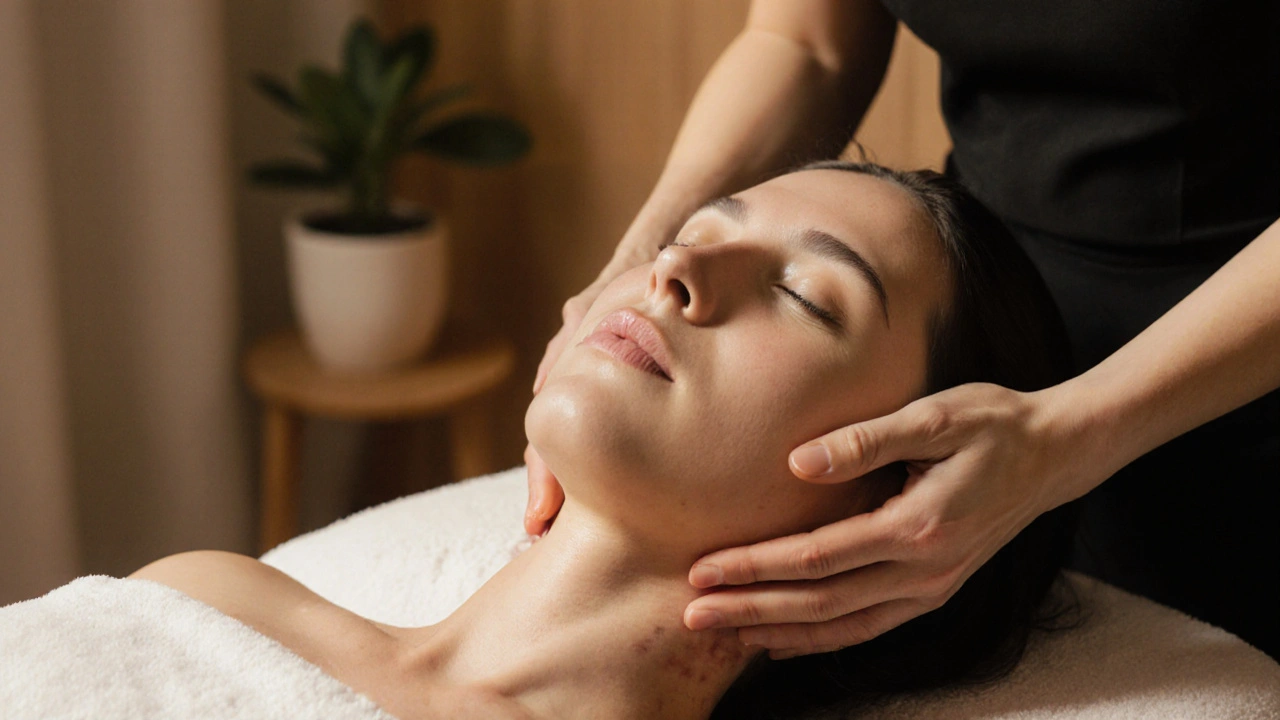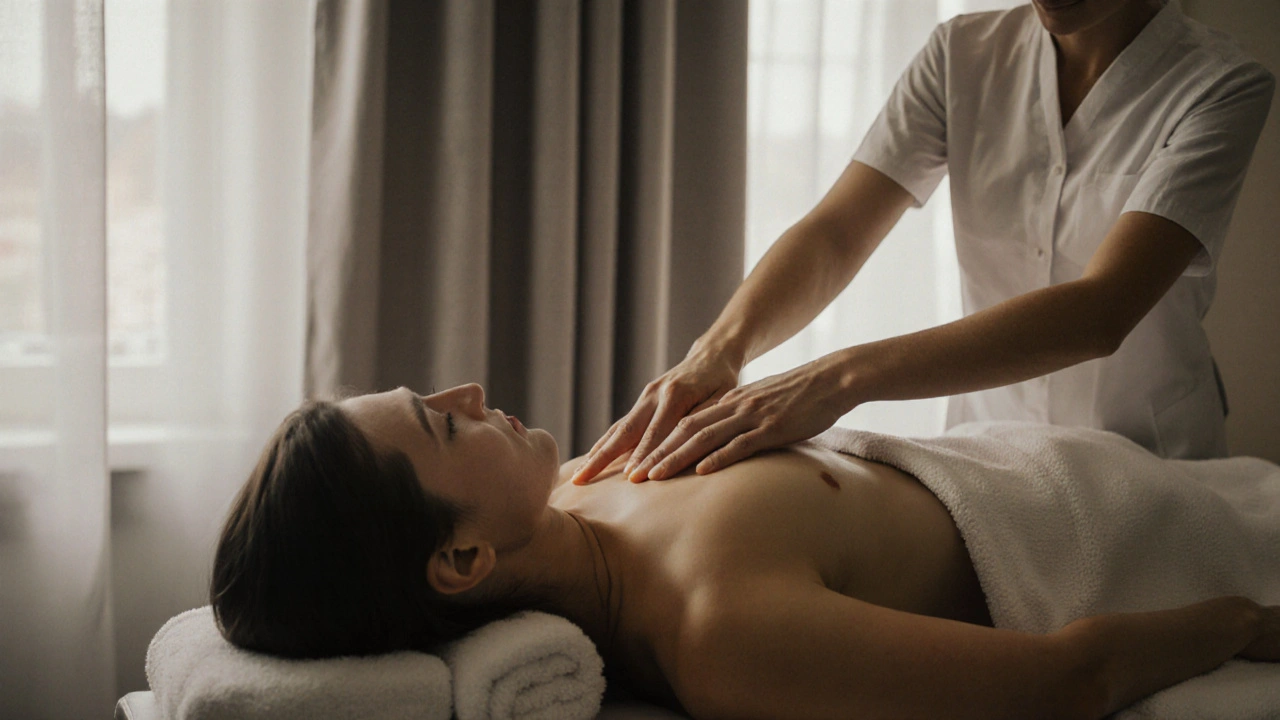Lymphatic Drainage Massage: How This Gentle Technique Transforms Your Health

If you’ve ever felt heavy, puffy, or just plain sluggish, your lymphatic system could use a little TLC. Lymphatic drainage massage might sound fancy, but it’s actually just a gentle way to help your body flush out waste, ease swelling, and feel lighter on your feet. No, you don’t need a prescription or a super-high pain tolerance — this kind of massage is soft, soothing, and meant to give your body’s natural filters a boost.
People turn to this type of massage for all sorts of reasons, from cutting down on everyday puffiness (hello, post-travel ankles!) to bouncing back after surgery. Some even swear by it for clearer skin or a much-needed immunity boost, especially during stressful times. Ever wondered if a little touch could make a big difference in how you feel every day? That’s the heart of lymphatic drainage.
So, what’s actually going on during these sessions, and is it worth adding to your routine? Let’s break down the basics first—no jargon, just practical info you can use.
- Key Facts and Quick Takeaways
- What Is Lymphatic Drainage Massage?
- Top Benefits and Who It Helps
- What Happens During Your Session
- Practical Tips for Getting Started
Key Facts and Quick Takeaways
Here’s the rundown on lymphatic drainage massage—the main stuff you’d want to know before giving it a shot.
- Lymphatic drainage massage uses light, rhythmic strokes. It’s not meant to “work out knots” like a typical deep-tissue session.
- This technique is designed to help move lymph fluid, which carries waste products away from your tissues. If your body holds onto extra fluid after travel, injury, or surgery—this is the approach pros often recommend.
- It’s pretty popular with people dealing with swelling (called lymphedema), post-surgery recovery, or even those just feeling extra sluggish.
- Sessions can last anywhere from 30 to 90 minutes. A lot of folks notice that they feel lighter or less swollen right after their first appointment.
- While the massage is super gentle, it should always be performed by someone who’s trained, especially if you have any medical conditions.
Quick stats to put things in perspective:
| Fact | Details |
|---|---|
| Average session cost | $80-$150 in most urban areas |
| Common session length | 60 minutes |
| Main benefits reported | Reduced swelling, lighter feeling, boosted energy |
| Who benefits most | People with lymphedema, post-surgery patients, those with chronic swelling |
If you want improved immune support, a way to recover faster after big gym days, or just an easy way to feel a bit more refreshed, this might just hit the mark. Don’t expect miracles overnight, but with the right technique, people often feel results sooner than they expect.
What Is Lymphatic Drainage Massage?
You’ve probably heard the term thrown around at spas or by wellness influencers, but what does lymphatic drainage massage actually mean? It’s a gentle, hands-on technique designed to get your lymph fluid moving, kind of like a soft reset for your body’s trash-removal system.
The lymphatic system works alongside your veins and arteries, helping flush out toxins, fight off illness, and keep swelling in check. This system doesn’t have its own pump, so it relies a lot on things like breathing, movement, and—you guessed it—a little help from manual therapy. When things get sluggish, you can feel swollen, fatigued, or more prone to getting sick.
During a lymphatic drainage massage, the therapist uses light, rhythmic strokes starting at areas where lymph nodes are clustered (like your neck, underarms, and groin). The moves are slow and steady, almost like a soft wave, aimed at directing the lymph fluid toward the right drainage points in your body. Don’t expect deep tissue pressure or anything that’ll leave you sore the next day—this technique is all about being gentle and precise.
- It’s often used to help reduce swelling after surgery, injury, or as a side effect of certain medical treatments.
- It’s popular among people with lymphedema (that’s swelling usually from fluid buildup), athletes dealing with injuries, or even those just wanting to de-bloat before a big event.
- No oils or lotions are usually used during the session—just the therapist’s hands.
Here’s a cool fact: Studies have shown that even one session can reduce limb swelling by up to 50% in those with lymphedema. Some people also notice a difference in energy and comfort right after their appointment.
All in, lymphatic drainage massage isn’t just some fancy spa fad. It’s a legit, evidence-backed technique designed to keep your body’s natural cleanup crew running smoothly. The best part? It’s so gentle you could literally fall asleep on the table—don’t be surprised if that happens!

Top Benefits and Who It Helps
Lymphatic drainage massage isn’t just for people with a medical condition, though it’s often recommended if you’re dealing with swelling or healing after surgery. Lots of folks who just want to feel better make it part of their self-care routine. Let’s get specific about who actually benefits the most, and how.
- Reduces swelling (aka lymphedema): If you’ve had surgery, especially around the lymph nodes, this type of massage is a common go-to for helping your body drain extra fluid and reduce puffiness. It’s also useful after injuries or if you sit or stand for too long and things get swollen.
- Speeds up recovery: After accidents, sprains, or cosmetic procedures, lymphatic massage helps your body clear out waste products and heal faster. Some studies report noticeable improvement within a few sessions.
- Boosts immune function: A healthy lymph system means your body clears out viruses, bacteria, and toxins more effectively. Think of it as giving your immune system a little jumpstart when you feel rundown.
- Improves skin appearance: This is one reason it’s a favorite in spas. Lymphatic massage can help clear up mild acne, decrease puffiness, and even give your face a fresh glow because it encourages better circulation.
- Promotes relaxation and well-being: Sometimes, just slowing down and letting someone treat you with care can help lower stress. The gentle, rhythmic movements signal your nervous system to chill out.
Ever feel bloated after a flight, a salty meal, or a long Netflix binge? This massage is like a natural reset button, and you don’t need a doctor’s note to give it a try if you’re healthy. But if you have certain conditions—like chronic swelling, fibromyalgia, or you’re recovering from cancer treatments—lymphatic drainage massage is often recommended by doctors and physical therapists.
| Who Benefits | Common Reasons for Massage |
|---|---|
| Post-surgery patients | Control swelling, support healing |
| People with lymphedema | Reduce buildup of lymph fluid |
| Fitness enthusiasts | Recovery after intense workouts |
| Stressed professionals | Lower stress, improve relaxation |
| Beauty seekers | Reduce puffiness, brighten skin |
Some people do feel tired or need to use the bathroom more after a lymphatic drainage massage; that’s totally normal since your body is literally moving waste out. Anyone with health concerns should check with their doctor first, but, for most, the potential benefits are worth checking out.
What Happens During Your Session
So, you’ve decided to give lymphatic drainage massage a shot—here’s what actually goes down once you walk in. Don’t expect a typical deep-tissue massage. Instead, you’ll settle onto a comfy massage table, usually in a quiet room where you can actually hear yourself relax. You’ll likely be asked to wear just your underwear and get covered by a soft sheet, kind of like any regular massage session.
The therapist starts by lightly placing their hands on your skin. No oils or strong kneading—think gentle, rhythmic strokes, moving in the direction of your lymph flow (usually up toward the heart or toward lymph nodes, like those behind the knees and under the armpits). These movements are slow and controlled, targeting the skin rather than deep muscles. Some folks are surprised at just how soft the pressure is, but that’s exactly the point—anything intense would actually make your lymph vessels tighten up, working against what you want.
Sessions usually last about 45-60 minutes, but sometimes they’re shorter or longer depending on why you’re there. If you’re dealing with post-surgical swelling or lymphedema, your therapist might focus more on certain areas, like arms or legs. If you’re there for overall wellness, they’ll follow your body’s main lymph pathways to get things moving everywhere (even your face, if you want to try out those celebrity-style facial massages!).
- There’s no pain—it’s more relaxing than anything, and most people feel super calm or even a little sleepy part-way through.
- Some people notice tingling, warmth, or a feeling like things are shifting—just your body responding to better fluid movement.
- You might get reminded to drink plenty of water afterward, because your body is now busy flushing out waste and extra fluid.
Fun fact for the data-lovers: According to a 2023 survey by the National Lymphatic Association, 8 out of 10 clients said they felt lighter and less bloated after just one session of lymphatic drainage massage.
Want to keep things chill and comfy when you book? Bring your own water bottle, arrive a few minutes early, and let your therapist know about any medical issues or recent surgeries. It helps them tailor the session for your body’s needs.

Practical Tips for Getting Started
Thinking about trying lymphatic drainage massage for the first time? Here are some easy, must-know tips to help you step in feeling confident—and to make sure you actually get the benefits you’re looking for.
Do your homework first. Look for licensed massage therapists or clinics that actually specialize in lymphatic drainage. Not every spa offers the real deal. Ask if your provider has special training—or even better, a certification—specifically in this therapy. Good therapists won’t mind you asking, and sometimes, clinics list their credentials on their website.
Check reviews, but dig deep. Positive feedback about feeling less swollen, lighter, or getting relief after a surgery is a good sign you’re reading a real review. Places that work with post-surgical clients or people who’ve had cancer treatment often signal more advanced skills.
Here’s what else can help you make the most out of your session:
- Avoid heavy meals or alcohol before your massage. A lighter stomach helps your body focus on the therapy.
- Wear comfy, loose clothing. Some therapists ask you to undress, but others work over thin clothes—always check ahead.
- Drink plenty of water right after your session. This helps flush toxins your body releases during the massage.
- Let your therapist know about any medical issues—especially circulation problems, infections, or recent surgeries. These can change the way they treat you.
For people with conditions like lymphedema or who've recently had surgery (like a C-section), doctors often recommend this type of massage. But always get your healthcare provider’s okay before booking, especially if you’re recovering or have a health issue.
Wondering how often you should get a lymphatic drainage massage? There’s no one-size-fits-all answer, but a lot of folks start with one session per week for a month. After that, you can spread them out. Some see results right away, while others notice more benefits after a few regular sessions.
Here’s a quick look at the basics to remember before starting:
| Tip | Why It Matters |
|---|---|
| Pick a licensed specialist | Ensures safety and effectiveness |
| Stay hydrated before & after | Boosts results and comfort |
| Avoid heavy meals beforehand | Makes treatment more comfortable |
| Share medical history | Prevents complications |
| Start slow, monitor results | Everyone reacts differently |
Set clear goals before you book, like reducing swelling, speeding up healing, or just feeling lighter. A good therapist will help track progress and adjust techniques, so every session gets you closer to what you want. And hey, if you’re nervous or have questions, just ask—most pros are happy to walk you through every step.


